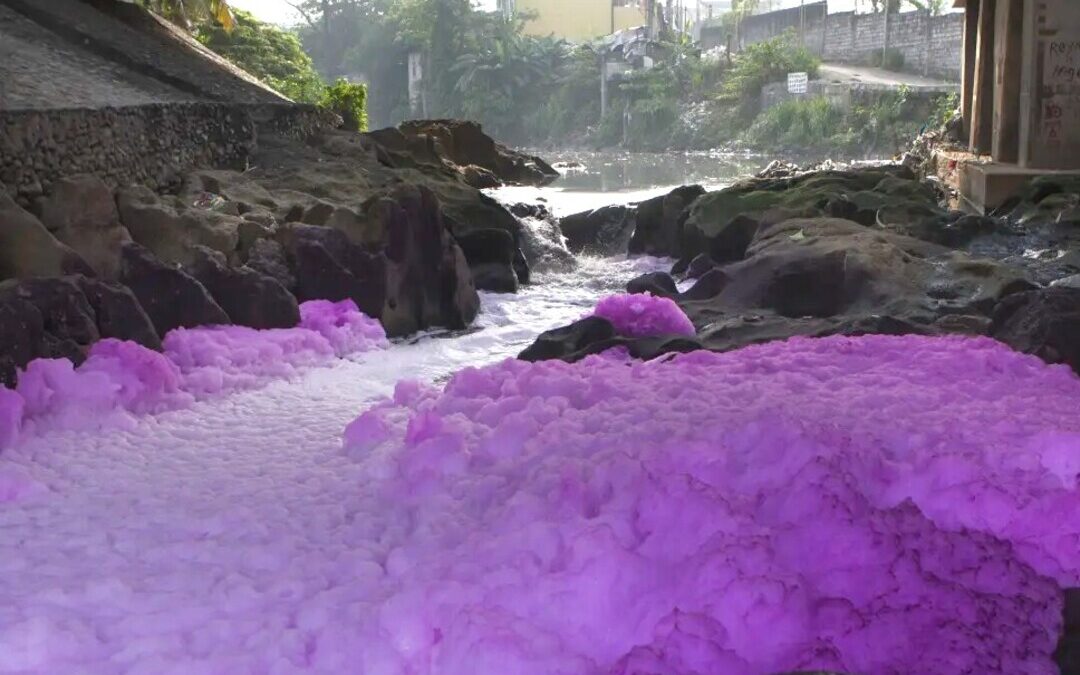Ionic Liquid Dyeing Slashes Pollution From Polyester Textiles by 96%, Study Finds
A new study shows ionic liquid dyeing could drastically reduce pollution, water use, and emissions in polyester textile production.
A new industrial-scale life cycle analysis has found that dyeing polyester fabric with ionic liquids — a type of green solvent — can cut environmental impacts by up to 95.9 percent compared to conventional methods, a breakthrough that could transform one of the world’s most polluting industries.
The peer-reviewed study, published in ACS Sustainable Chemistry & Engineering, compared the traditional high-temperature dyeing process of polyethylene terephthalate or PET fabric with a newer method using 1-butyl-3-methylimidazolium chloride or Bmim Cl, an ionic liquid.
Sweeping Reductions
Key environmental indicators saw dramatic reductions. The Global Warming Potential — the metric that measures how much heat a greenhouse gas traps in the atmosphere for the same amount of carbon dioxide — dropped by 71.88 percent.
Eutrophication Potential — the metric that quantifies the risk of nutrient enrichment mainly from nitrogen and phosphorus compounds in natural water bodies — fell by 71.32 percent.
Acidification Potential — the metric that quantifies how much emissions from substances, such as sulfur dioxide, nitrogen oxides and others — contribute to acidification processes in the environment, declined by 53.72 percent.
Abiotic depletion of elements or the consumption of non-living, non-renewable natural resources from the Earth’s crust plummeted 95.90 percent, while water consumption decreased 88.93 percent compared to traditional dyeing.
“These results demonstrate a strong case for replacing water- and chemical-intensive dyeing with more sustainable alternatives,” said Nurdan Büyükkamacı, lead author of the study and environmental engineering professor at Dokuz Eylül University.
A Cleaner Way to Dye
The environmental toll of textile dyeing is well documented, with the industry consuming an estimated 40 billion cubic meters of water annually. Traditional polyester dyeing relies on high temperatures of 130 degrees Celsius, pressure, and multiple steps involving toxic auxiliaries, such as dispersing agents and caustic soda.
In contrast, the ionic liquid method operates at 95°C, requires no pretreatment or post-washing, and uses fewer chemicals overall. The single-step process not only saves water and energy but also avoids the release of hazardous substances.
Sourcing the Solvent Matters
Despite these gains, the study did not ignore the environmental cost of producing Bmim Cl. The life cycle inventory revealed that its most impactful precursor, N-methylimidazole, accounted for up to 46 percent of the water scarcity impact and 35 percent of the GWP in its synthesis.
“This highlights the importance of evaluating upstream impacts, not just end-use performance,” Büyükkamacı noted.
Recovery and Reuse Drive Further Gains
The researchers modeled a 90 percent recovery scenario for the ionic liquid using aqueous two-phase extraction, a method gaining traction in industrial chemistry.
Under this scenario, environmental impacts were further reduced. Freshwater aquatic ecotoxicity dropped by 70.37 percent, while human toxicity potential fell by 22.45 percent. Water consumption decreased by nearly 23 percent.
“This circular approach could make IL dyeing even more sustainable and economically viable,” the study concluded.
Caution on Cost and Scale
While the findings are promising, the authors acknowledged key challenges ahead. Ionic liquids remain costly — five to 20 times more expensive than conventional solvents — and data on large-scale recovery methods are still emerging.
Furthermore, the toxicity and biodegradability of some ionic liquids are not fully understood, raising concerns for widespread adoption without further safeguards.
Outlook: Greener Textiles Within Reach?
With polyester accounting for over half of global fiber production, the potential for IL-based dyeing to reduce the fashion industry’s environmental footprint is substantial. However, wider use depends on resolving issues around IL production, cost, and safe recycling.
“Scaling this technology responsibly could help reshape a notoriously polluting industry,” said co-author Duygu Totur Pamık.
The research, funded by the Scientific and Technical Research Council of Turkey, adds critical momentum to efforts aimed at greening textile manufacturing, one of the fastest-growing sources of global emissions and water pollution.
Nirmal Menon
Related posts
Subscribe
Error: Contact form not found.


